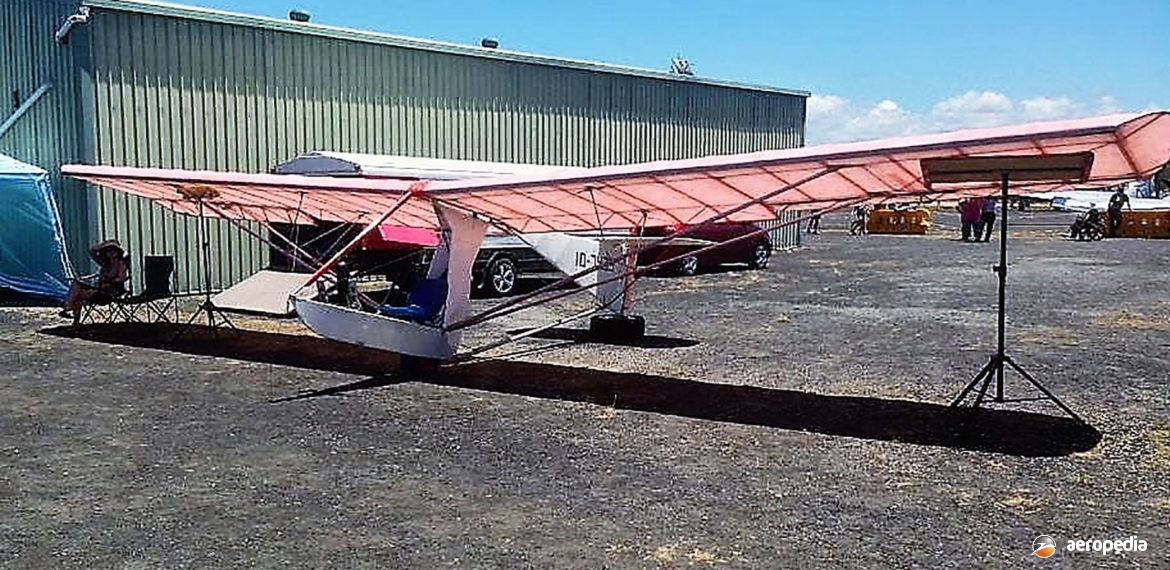Photograph:
Sandlin Goat 1 10-7439 (RAA)
Country of origin:
United States of America
Description:
Single-seat ultralight glider
Power Plant:
Nil
Specifications:
- [Goat 1 glider]
- Wingspan: 11 m (36 ft)
- Length: 5.21 m (17 ft 8 in)
- Wing area: 16.2 m² (174 sq ft)
- Empty weight: 64 kg (140 lb)
- Loaded weight: 136 kg (300 lb)
History:
The Goat series of ultralight basic gliders was designed by Michael Sandlin in the United States, it being a parasol wing, single-seat glider for which Mr Sandlin produced technical drawings for construction by amateur builders. The prototype was first flown on 1 February 2003 and one example in the United States made a cross-country flight of 97 km (60 miles) during which it exceeded 3,962 m (13,000 ft). The aircraft was a development of an aircraft known as the Bug, also designed and built by Mr Sandlin. It was aimed at a market for an inexpensive and easy to fly three-axis aircraft and was also known as the Airchair.
In the United States it met FAR 103 Ultralight Vehicle regulations. It was built of aluminium tube bolted together with Dacron fabric covering. The wing ribs were constructed of fibreglass, graphite rod and epoxy resin over Styrofoam. The wing was supported by lift struts and jury struts, but cable bracing could also be used. The undercarriage was normally a single mono-wheel. It could be dismantled so it could be transported on a car or trailer and took little room when stored. It was designed for aerotow launch by an ultralight aircraft, but it could also be winch launched, or could be flown off a slope.
Four variants were produced. The first was known as the Goat 1, which had V-lift struts and jury struts, and used a 41 cm (16 in) monowheel. The Goat 2 was a lightweight variant with a kingpost and steel cable bracing. The Goat 3 had a reduced span and had V-lift struts and an aerofoil which permitted higher speeds. The Goat 4 had the standard wing and used the cable-braced wing of the Goat 2 and the nose and tail of the Goat 3.
It appears three examples of the Goat series of gliders were built in Australia, and two of these were used as basic training gliders. However, one Goat 1 (c/n G1) was fitted with a Ros Motor Italia R-001 engine and, instead of a single monowheel for operations, was fitted with three wheels for self-launching. This machine was first registered with Recreation Australia as 10-7439 on 24 March 2010. In 2014 it was noted as being on the market for sale. After being sold the engine was removed by the new owner and it operated as a basic training glider.

